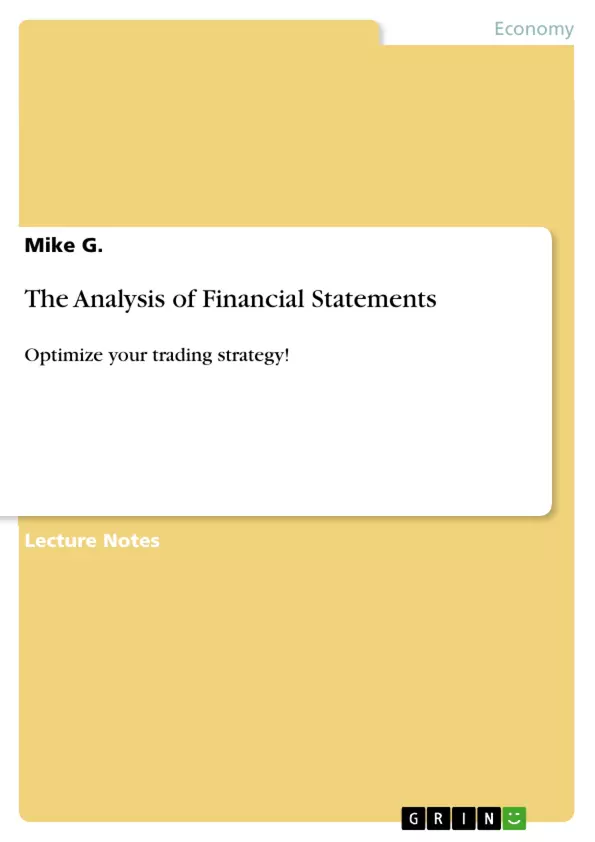Large (global) companies are trained to stretch federal law for their own benefit. With financial statement analysis, such tricks of the firms can be identified and the company's intrinsic value will be revealed. For sure, it is hard work to do and it is furthermore very time-consuming, but it is worth the pain when your investments pay off. This text will introduce the most important adjustments you can undertake to correct the financial statements from so-called “window-dressing”.
A quick look at the actual and previous balance sheets of the Swedish clothing retailer H&M raises the question how they managed to keep their liabilities that low. This is mainly due to the excessive usage of (operating) lease agreements which aren't shown in the balance sheet as liability; only the rent expense is included in the statement of profit & loss. Many investors, therefore, deem H&M to be a very stable and profitable enterprise. Such misbeliefs can lead to high losses of the investors or even to a global financial crisis as seen 2007/08.
Inhaltsverzeichnis (Table of Contents)
- General information
- Apple Case Study
- Deferred Revenue by Apple
- Managing Expectations
- Performance vs. consensus estimates
- Company Valuation (equity perspective)
- Dividend discount model
- Residual income model // economic profit valuation model
- Example company valuation
- Valuation of a company with financial obligation (entity perspective)
- Summary
- Concept of Economic Value Added (EVA) by Stewart
- Financing Leverage Effect
- The role of accounting information in equity valuation
- The case of doubtful receivables
- Summary of this chapter
- Profitability analysis: RoE
- Decomposing RoE - The Basic Dupont Model
- Accounting Analysis
- Techniques of earnings management
- Operating Accruals (Apple Example)
- Performance comparison of start-ups and older companies
- Criteria for Capitalization
- Red flags to identify misuse of non-recurring expenses
- Important Valuation Ratios
- Sustainable growth rate
Zielsetzung und Themenschwerpunkte (Objectives and Key Themes)
This text aims to equip readers with the tools and knowledge necessary to conduct a thorough financial statement analysis, particularly focusing on identifying and correcting misleading accounting practices that may obscure a company's true value. By understanding the nuances of financial reporting and the potential for manipulation, investors can make more informed decisions about their investments.
- Importance of financial statement analysis for uncovering true company value
- Techniques to identify and adjust for "window-dressing" in financial statements
- The role of expectations and consensus estimates in company valuation
- Different valuation models based on dividends, residual income, and economic profit
- Key value drivers and profitability metrics in company analysis
Zusammenfassung der Kapitel (Chapter Summaries)
The text begins by introducing the concept of financial statement analysis and its importance in revealing the true value of a company. It uses the example of H&M's use of operating lease agreements to highlight how companies can manipulate their financial statements to present a misleading picture of their financial stability.
The Apple Case Study explores how companies can manage expectations by deferring revenue and its impact on share price volatility. It explains the concept of deferred revenue and its implications for financial reporting.
The chapter on Managing Expectations discusses the role of analysts' consensus estimates in company valuation and how companies can manipulate their financial performance to meet these expectations.
The chapter on Performance vs. Consensus Estimates examines the relationship between meeting or beating consensus estimates and shareholder returns. It highlights the importance of considering other factors beyond meeting expectations, such as growth and profitability.
The section on Company Valuation (equity perspective) introduces different valuation models, including the dividend discount model and the residual income model. It explores the key value drivers in each model and explains how they relate to profitability, growth, and economic profit.
The chapter on Concept of Economic Value Added (EVA) by Stewart delves into the concept of EVA as a metric for measuring a company's true economic profit. It also discusses the financing leverage effect and its impact on company valuation.
The chapter on The role of accounting information in equity valuation examines how accounting information can be used to assess the value of a company's equity. It also discusses the case of doubtful receivables and its implications for financial reporting.
The chapter on Profitability analysis: RoE focuses on analyzing a company's return on equity (RoE) as a key profitability metric. It explores the DuPont Model for decomposing RoE into its component parts and discusses various techniques for earnings management.
The chapter on Important Valuation Ratios explores several important valuation ratios, including the sustainable growth rate, and their significance in assessing a company's value.
Schlüsselwörter (Keywords)
Financial statement analysis, window-dressing, operating lease agreements, deferred revenue, expectations management, consensus estimates, company valuation, dividend discount model, residual income model, economic profit, EVA, financing leverage effect, return on equity (RoE), DuPont Model, earnings management, valuation ratios, sustainable growth rate.
- Arbeit zitieren
- Mike G. (Autor:in), 2017, The Analysis of Financial Statements, München, GRIN Verlag, https://www.grin.com/document/366937



